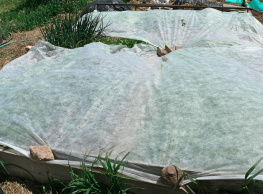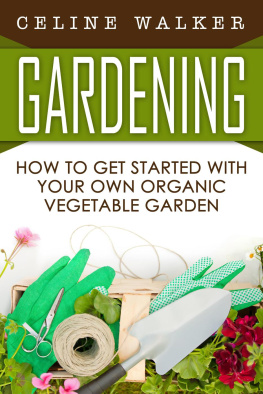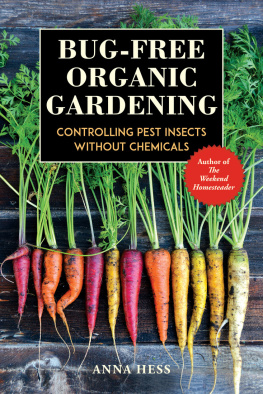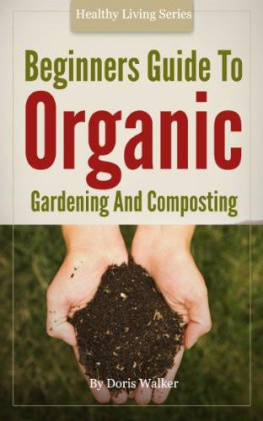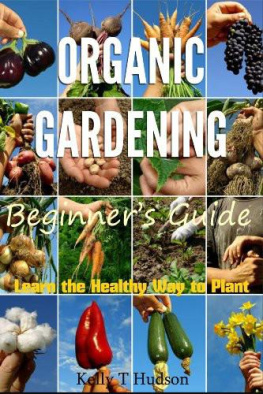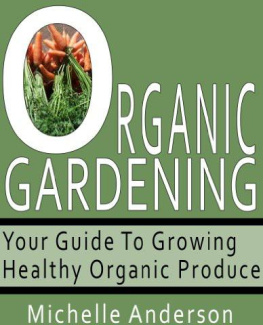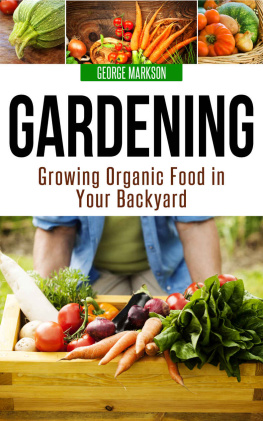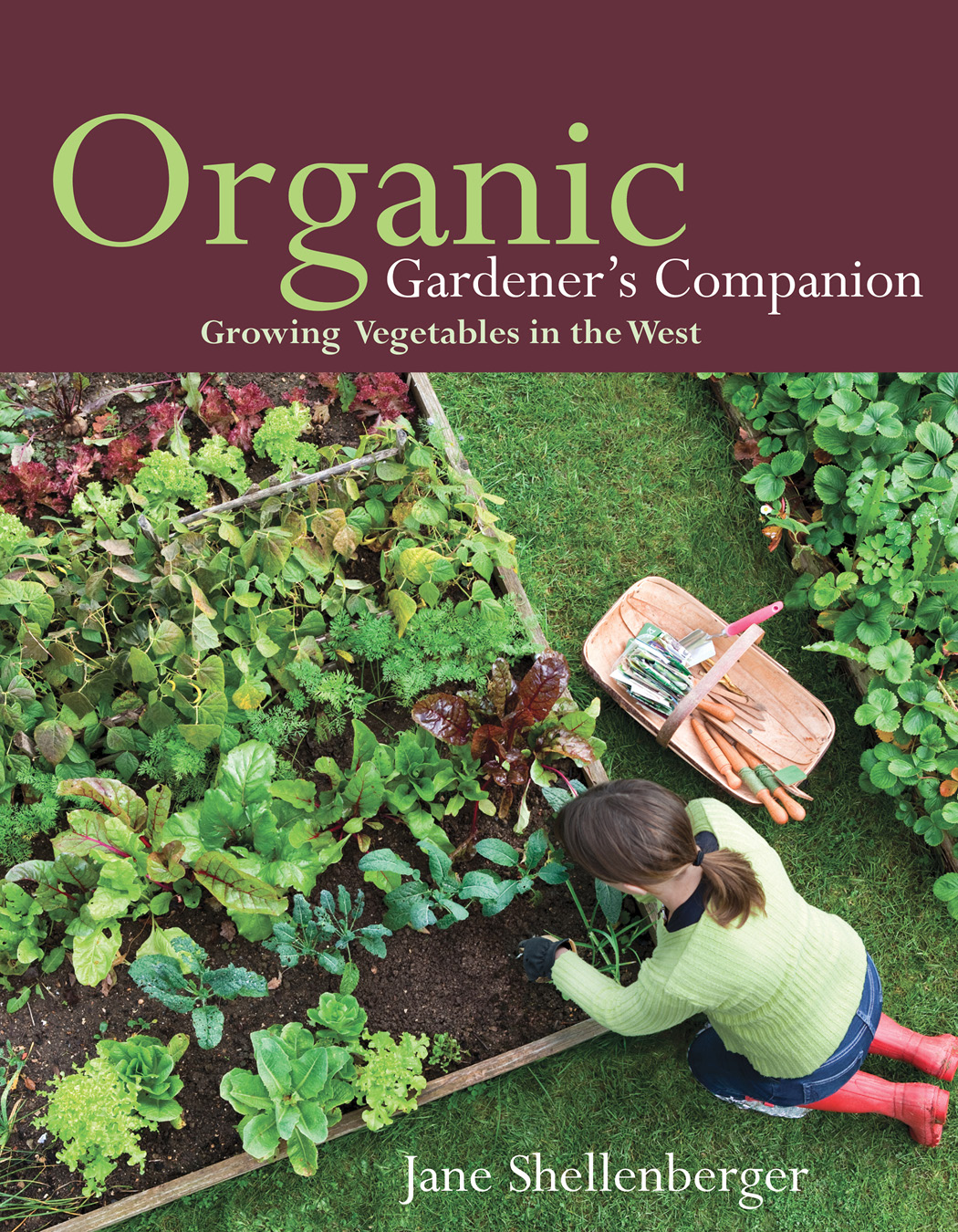
Text 2012 by Jane Shellenberger
Photographs 2012 by Jane Shellenberger, except the following:
Photographs Barbara Miller: vii; Wikimedia Commons Public Domain: 19, 20, 43, 45, 120; Library of Congress, Prints & Photographs Division: 22 (LC-USF344-003181-ZB), 23; Jonathan D. Eisenback, www.Mactode.com: 29, 30; Wikimedia Commons/Goldstein labtardigrades: 30; Wikimedia Commons/ninjatacoshell: 31; Michael McCrea: 85 (left), 163; Robyn Wallerich: 89; James M. Knopf: 103; Dan Moore: 110; Karen Beeman, Wee Bee Farms: 145 (top); Shep Gilchrist: 169.
Insect photographs Whitney Cranshaw, Colorado State University, bugwood.org: 93, 94 (all but bottom right and second from bottom right), 95 (middle left, bottom left, and middle right), 96 (bottom left), 97 (all but bottom right), 98 (all but bottom right), 100 (all but middle and bottom right); Frank Peairs, Colorado State University, bugwood.org: 94 (bottom right and second from bottom right), 95 (bottom right), 98 (bottom right); David Cappaert, Michigan State University, bugwood.org: 95 (top), 99 (top and middle right); Joseph Berger, bugwood.org: 96 (bottom right), 97 (bottom right); Howard Ensign Evans, Colorado State University, bugwood.org: 96 (top), 101; Steven Katovich, USDA Forest Service, bugwood.org: 99 (middle left); Cheryl Moorehead, bugwood.org: 99 (bottom left); Susan Ellis, bugwood.org: 99 (bottom right); John A. Weidhass, Virginia Polytechnic Institute and State University, bugwood.org: 100 (middle right); H. Gross, USDA Agricultural Research Service, bugwood.org: 100 (bottom right).
Benefits of Aerated Compost Tea, page 32, and Roland Evanss Favorite Container Soil Recipe, page 74, used with permission of Roland Evans.
Mikl Brawners Energy-Saving Greenhouse, page 87, used with permission of Mikl Brawner.
A Test for Chemical Herbicides, page 106, used by permission.
All rights reserved. No part of this book may be reproduced or transmitted in any form or by any means, electronic or mechanical, including photocopying, recording, or by an information storage and retrieval systemexcept by a reviewer who may quote brief passages in a reviewwithout permission in writing from the publisher.
Library of Congress Cataloging-in-Publication Data
Shellenberger, Jane.
Organic gardeners companion : growing vegetables in the West / Jane Shellenberger.
p. cm.
Includes bibliographical references and index.
ISBN 978-1-55591-725-8 (pbk.)
1. Vegetable gardening--West (U.S.) 2. Organic gardening--West (U.S.) I. Title. II. Title: Growing vegetables in the West.
SB324.3.S54 2012
635.0978--dc23
2011031537
Printed in China
0 9 8 7 6 5 4 3 2 1
Design by Jack Lenzo
Fulcrum Publishing
4690 Table Mountain Dr., Ste. 100
Golden, CO 80403
800-992-2908 303-277-1623
www.fulcrumbooks.com
Contents
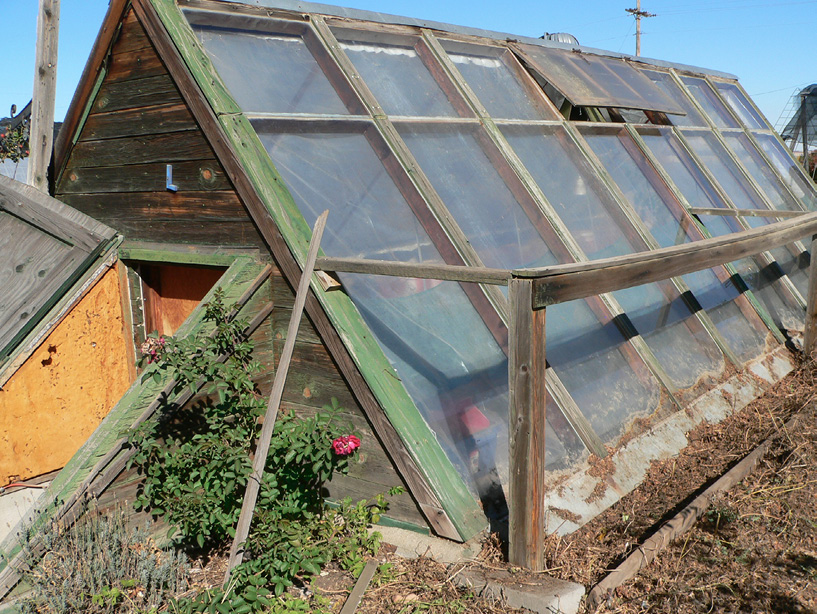
Acknowledgments
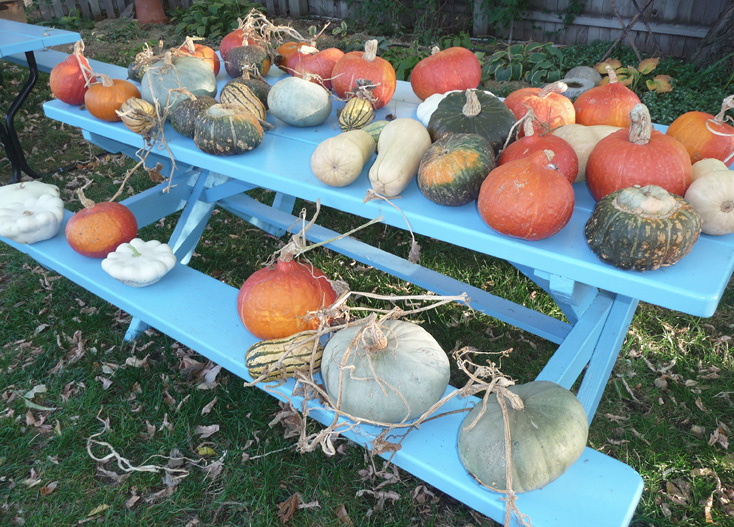
M any thanks to Daniel Ault, Mikl Brawner, Whitney Cranshaw, Roland Evans, Matt Kelsch, Paul Lander, Kristin Lopez, Barbara Miller (my sheet mulch mentor), Penn and Cord Parmenter, Kayann Short, and Tom Theobald for reviewing and/or contributing to parts of the manuscript; to all the bugwood.org photographers for sharing their insect photos; to all of the Boulder Culinary Gardeners for camaraderie, lively discussion, information sharing, and great potlucks, especially Niki Hayden, Frank Father Earth Hodge, and Sandy Swegle, from whom I have learned a great deal; to generous, ebullient plantsman Panayoti Kelaidis, a giant among horticulturists; to seed-saving pioneers Bill McDorman and Belle Starr; to those of my neighbors on North 66th Street who refrain from using chemical fertilizers, pesticides, and herbicides on their property; to helpful gardener friends Michael McCrea, Jeff Pavek and Pete, Sahand Tabatabaii; to encouraging writer friends Ted Ringer and Thea Tennenbaum; to all the fearless, environmentally aware organic gardeners, permaculture practitioners, and farmers in Colorado and the West; and to Oscar, who always keeps the home fires burning and the vitality levels up. Special thanks to Carolyn Sobczak, my skilled and patient editor at Fulcrum.
Introduction
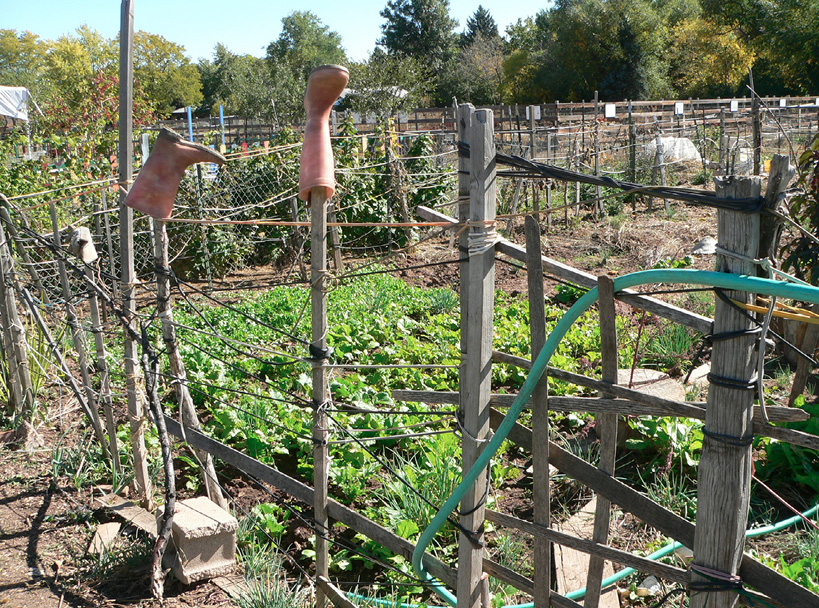
Community gardens are a great place to learn from other gardeners and share ideas and challenges.
M y first vegetable garden was in a hard-packed dirt driveway in Boulder, Colorado. I was living in a basement apartment there, having jumped at the chance to come out West with a friend in his Volkswagen Bug, fleeing college and inner-city Philadelphia. I was twenty, hungry for experience, and fully intending to be a ski bum in my new life. But it didnt turn out that way.
The garden was my boyfriends idea. He grew up on a farm in Loveland and knew just what to do. While I was off at my minimum-wage job, Randy dug the compacted ground with a shovel and pick, added bags of manure and compost, bought seeds and a hose, and enclosed the whole thing with a gated chicken-wire fence, all in one day. Before long we had vegetables of all kinds, including beans and melon vines that clambered up and over the top of the fence. I was worried about bugs, but Randy assured me they wouldnt eat much, and they didnt.
We (well, mostly he) created a striking, lush oasis on the edge of a bare and dusty driveway that connected the alley with the street. The neighborhood kids used the alley as a shortcut on their way to school. If I was out working in the garden, they might wander over to ask a few questions, so right away I discovered the social benefits of gardening.
Since my arrival in the West four decades ago, Ive lived in many different apartments and houses in various Colorado neighborhoodsurban, suburban, and rural. I planted a garden of some kind at each one and often maintained a community vegetable plot with a friend too. Gardening isnt something I went to school to learn; I just jumped in, learning from my mistakes and from other gardeners, picking up tips here and there. But I was already familiar with plants and flower gardens.
My mother nearly finished an advanced degree in botany after her father nixed her preferred artistic path as too Bohemian. While I was growing up, she spent much of her time outdoors in baggy slacks with dirty knees working in the woodland gardens she created. She taught my sisters and me the Latin names of plants and helped us with our own little gardens. And my father, always a showman with an angle (often designed to keep the IRS at bay), grew flashy orchids later in life, renting them out to galleries and offices in New York and to upper crust private homes for party or holiday decor, making the deliveries personally in an old Rolls-Royce. I sometimes wonder if his routine pesticide spraying inside a small greenhouse played a role in the onset of Parkinsons disease, to which he finally succumbed.
Most of the gardeners I know had a childhood mentor or have fond memories with a parent, grandparent, or a kindly older neighbor who gardened. But as home vegetable gardens became less necessary and food became fast, more and more people grew up without an opportunity to learn about or even see someone gardening. Though gardening classes and programs have proliferated recently, many American children and some adults still dont exactly know where food comes from or how it grows. Without any fundamental experience or context, gardening can seem much more difficult than it is, especially in the semiarid West, where locals lament the challenging growing conditions.
Next page
